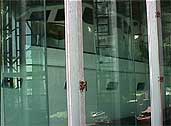|
Other Places |
|||||||||||||||||
|
|
|||||||||||||||||
|
Other Sections |
|||||||||||||||||
|
|
|||||||||||||||||
|
The province is named after Granma, the yacht which carried Fidel Castro and other revolutionaries out of exile back to Cuba.The northern part of the province is mainly dry grassland, bordering the provinces of Las Tunas and Holguin. Traveling south through the province, the terrain changes to rolling plains and foothills, and eventually becomes very mountainous. Cuba's tallest peak, Pico Turquino, rises 1,968 meters above sea level near the province's southern shore.As is noted in museums and historical markers throughout the province, many important events in Cuban revolutionary history took place in Granma province. The region has shown strong support for rebel and opposition forces from the beginning of recorded Cuban history. Hatuey, the leader of a local indigenous tribe, was one of the first to rebel against the intrusive Spanish. Hatuey died defending his people's land from the Spanish, and is today a national hero, with museums, monuments, and a brand of beer dedicated to him. Early revolutionaries of the 19th century also fought in this province; Carlos Manuel de Céspedes declared Cuba's independence here, and José Martí was killed in battle in the town of Dos Ríos.In 1976, the province was named after Granma, the yacht that Fidel Castro's original band of revolutionaries used to return from exile. From there, they built up a support base throughout Cuba which eventually gained enough momentum to depose dictator Fulgencio Batista, and spark a successful Revolution.
|
|||||||
 Granma province is another small, mainly agricultural province in eastern Cuba. Granma's capital is the city of
Granma province is another small, mainly agricultural province in eastern Cuba. Granma's capital is the city of 